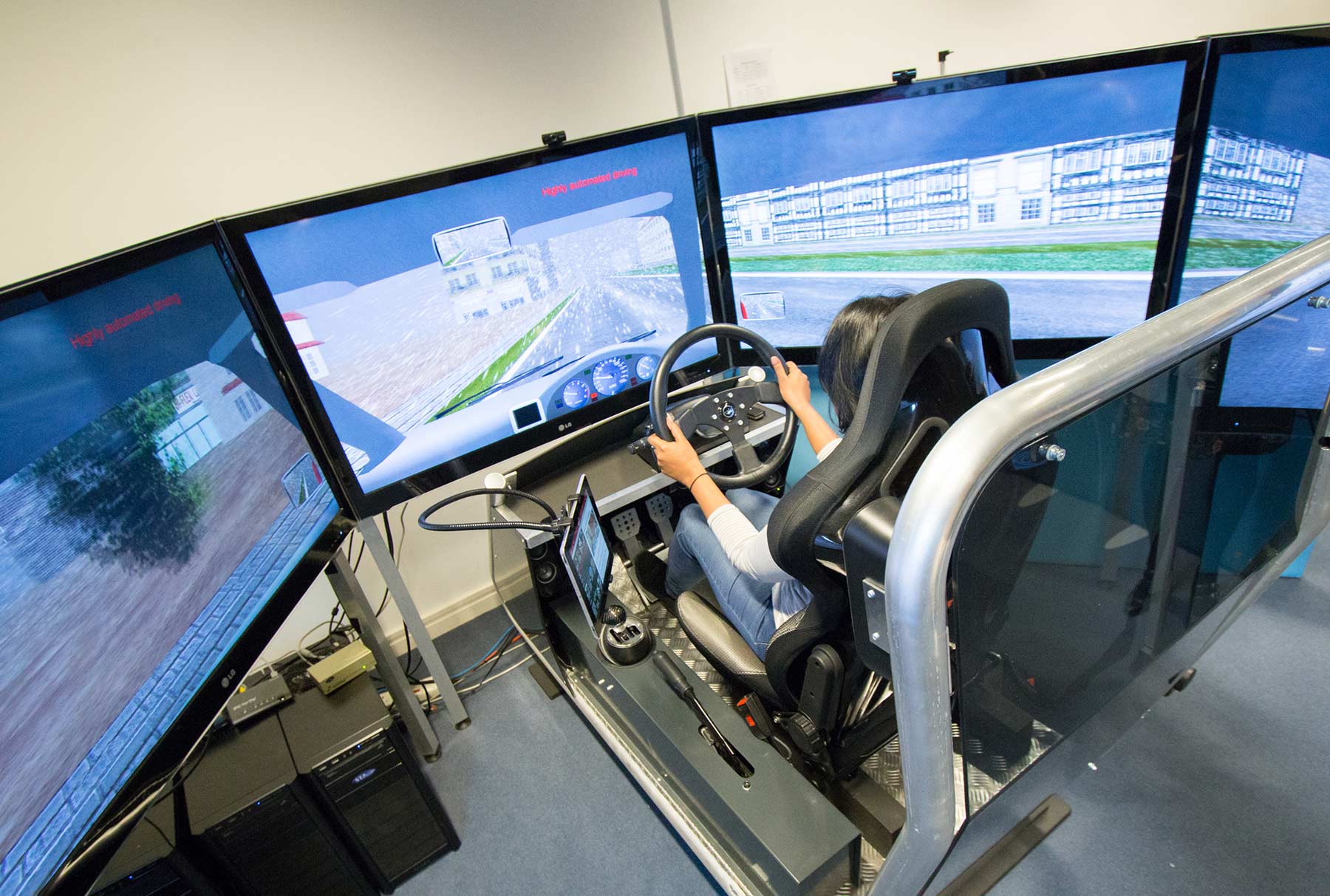Mechanical Engineering Facilities
The School of Engineering is in the Stephenson Building, close to all of the university's world-class facilities. It has both general and specialist laboratories, as well as CNC workshop facilities.
The Stephenson Building houses one of the largest networked computer clusters on campus (120+ PCs). This network supports all the specialist software introduced and used within the course (e.g CAD, stress analysis, fluid dynamics, signal processing packages). We also have our own School cluster (60+ PCs), which work with instrumentation and data acquisition laboratories.
Taught course facilities
We have a wide range of specialist mechanical engineering facilities which include:
- 3D motion capture
- x-ray diffraction
- robotics
- micro-electromechanical systems
- dedicated biomaterial and biotribology labs
- railway systems
We also have facilities for:
- composite materials fire testing
- gear manufacture and testing
- nanomeasurement
- engine testing
- artificial joint testing
Research programme facilities
Depending on your research area you will have access to the following world-class facilities.
TG/DTA/DSC thermal analysis max temp.1600°C
Thermogravimetry with simultaneous Differential Thermal Analysis and Differential Scanning Calorimetry measurements within the temperature range of ambient to 1600°C. It measures glass transition, melting, crystallisation, heat capacity, and weight changes with temperature.
50-station pin-on-disc wear machine
This is a 50-station version of the machine designed by Vesa Saikko (Saikko 2005, J Eng Med, 309-18) and now manufactured by Phoenix Tribology. A recent paper which employed the 50-station machine to compare the wear of UHMWPE and XLPE is Harsha and Joyce, 2013, J Eng Med, 600-08.
4 station pin-on-plate machine
Two of these four station wear test rigs are available. Each test station can apply multi-directional motion to test samples which provides clinically relevant wear rates. A recent paper which describes the use of the machine to investigate the addition of a visco-supplement to a lubricant of bovine serum is Joyce, 2009, J Eng Trib, 297-302.
Design, manufacture and materials
You will have access to impressive facilities that will allow you to:
- materials testing and failure analysis
- product development and mechanical testing
- metrology
- pultrusion, filament winding, resin infusion and vacuum bag moulding
- selective laser sintering and fused deposition modelling
- full-scale rail vehicle and track investigations at NewRail's regional office and working railway centre, Barrow Hill test site
- dedicated labs for both 3D printing and biofabrication
- fused filament fabrication, stereolithography, and binder jetting 3D printing processes
- inkjet, microvalve, and reactive jet impingement biofabrication techniques
Fluid dynamics and thermal systems
Our world-class facilities include:
- high-performance computing facilities
- Water Tunnel and Wind Tunnel
- Particle Image Velocimetry (PIV)
- Hot Wire Anemometry Facilities
- IC engine test bench
- high pressure and high temperature combustion vessel
We also have access to National Specialist facilities.
As well as this, we offer a wide range of experimental facilities, such as:
- rotating stage goniometer
- FLIR thermal cameras
- custom-made permeability rig
- capillary pressure measurement rig
- open-return boundary-layer wind tunnel
- open-jet wind tunnel
- high-aspect ratio channel air-flow facility
- water flume
- stereoscopic particle image velocimetry
- micro-particle image velocimetry
- two-component laser Doppler velocimetry
- thermal anemometry
- high-speed imaging
- skin-friction drag balance
- instantaneous lift and drag balance
- Micro-Electro-Mechanical-Systems (MEMS) wall-shear stress measurement systems
